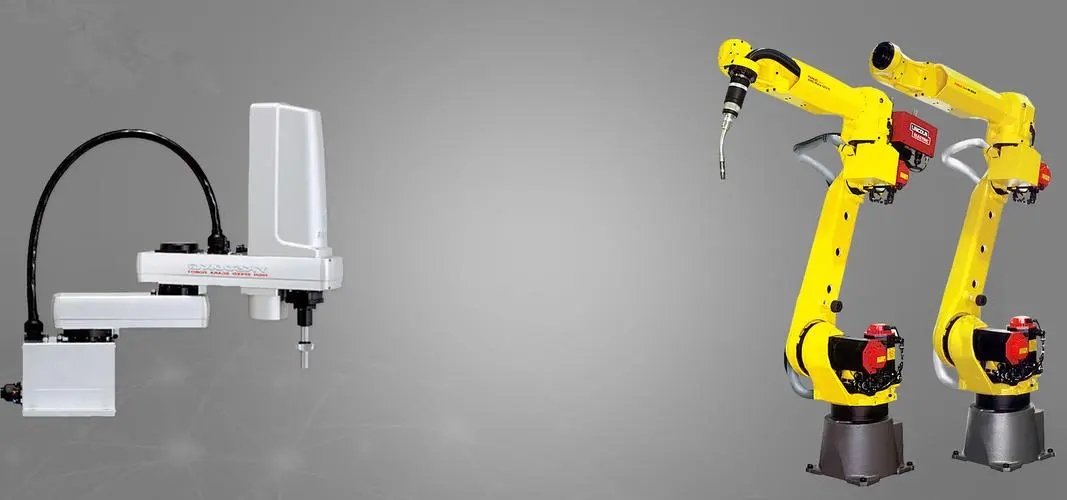Welding tongs are instruments that clamp welding electrodes and conduct welding current during welding. It is a hand-held insulating appliance matched with the arc welding machine. During manual arc welding, it is used to clamp and manipulate the welding rod and ensure the electrical connection with the welding rod. Electric welding tongs have main technical indexes such as shell protection, anti electric shock protection, temperature rise, resistance to welding spatter, resistance to drop and so on. Then, what are the types and structures of welding tongs? Next, Xiaobian will introduce it to you.
From the structural relationship between the resistance welding transformer and the welding clamp, the welding clamp can be divided into separate type, embedded type and integrated type.
Types of welding tongs
1. Separate welding tongs
The welding clamp is characterized in that the resistance welding transformer is separated from the clamp body, the clamp body is installed on the robot arm, and the welding transformer is suspended above the robot, which can move along the direction of the robot wrist movement on the track, and the two are connected by secondary cables. Its advantages are that it reduces the load of the robot, high movement speed and low price;
The main disadvantage of separate welding tongs is the need for large capacity welding transformer, large power loss and low energy utilization. In addition, the tensile force and torsional force caused by the thick secondary cable on the welding clamp act on the arm of the robot, which limits the selection of spot welding working area and welding position;
Separate welding tongs can use ordinary hanging welding tongs and resistance welding transformers. However, the secondary cable needs to be specially manufactured. Generally, the two wires are made together, separated by an insulating layer, and each wire should be made hollow for water cooling. In addition, the cable should have certain flexibility;
2. Built in welding tongs
In this structure, the resistance welding transformer is placed in the robot arm to make it close to the clamp body as much as possible, and the secondary cable of the transformer can move inside;
When this form of welding tongs is adopted, it must be designed uniformly with the robot body. Its advantage is that the secondary cable is short and the capacity of the transformer can be reduced, but the design of the robot body becomes complex;
3. Integrated welding tongs
The so-called integrated type is to install the resistance welding transformer and clamp body together, and then fix them on the flange at the end of the robot arm;
The main advantage is that the thick secondary cable and the working frame of the hanging transformer are omitted, and the output end of the welding transformer is directly connected to the upper and lower arms of the welding tongs. Another advantage is to save energy. For example, with an output current of 12000A, the separate welding clamp needs a 75KVA transformer, while the integrated welding clamp only needs 25KVA;
The disadvantage of the integrated welding clamp is that the weight and volume of the welding clamp are significantly increased, and the bearing capacity of the robot body is required to be greater than 60kg. In addition, the inertia force generated by the weight of the welding tongs on the mobile wrist of the robot is easy to cause overload, which requires that the distance between the center of gravity of the welding tongs and the axis line of the robot arm should be minimized in the design.
Structure of welding tongs
The welding tongs used by spot welding robots are so-called “integrated” welding tongs. Such welding tongs can be roughly divided into: welding arm, transformer, cylinder or servo motor, frame, floating mechanism, etc.
1. Welding arm the welding arm of spot welding robot welding clamp is classified according to the material used, mainly including casting welding arm, chromium pick brazing arm and aluminum alloy welding arm. Due to different materials, the corresponding structural forms are also different;
2. The welding tongs connected between the transformer and the welding robot can be divided into medium frequency welding tongs and power frequency welding tongs according to the transformer form of the welding tongs. Medium frequency welding tongs use inverter technology to convert power frequency electricity into 1000Hz medium frequency electricity. The main difference between the two welding tongs is the transformer itself, and the mechanical structure principle of the welding tongs is exactly the same;
3. Electrode arm can be divided into “pneumatic” and “motor servo drive” according to different driving forms of electrode arm.
“Pneumatic” is to use compressed air to drive the pressurized cylinder piston, and then the connecting rod of the piston drives the corresponding transmission mechanism to drive the two electrode arms to close or open;
The welding tongs with “motor servo drive” are called “servo welding tongs” for short. It is a kind of welding tongs that uses servo motor instead of compressed air as power source. The opening and closing of the welding tongs are driven by the servo motor and fed back by the pulse code disk. The opening degree of the welding tongs can be arbitrarily selected and preset according to the actual needs, and the pressing force between the electrodes can also be adjusted steplessly. It is a welding tongs for robots that can improve the quality of welding joints and have high performance.


